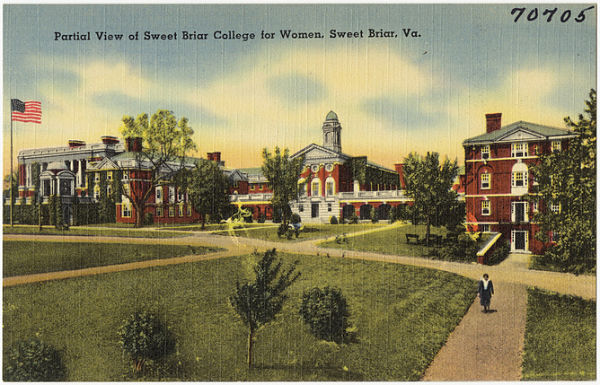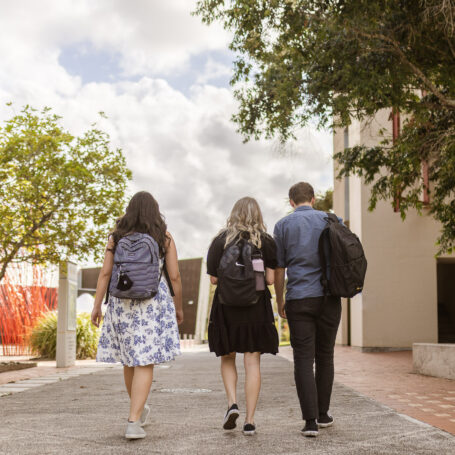An Almost-Autopsy of Small Colleges
 If there is one thing I learned during my two years as vice president at the American Council on Education, it’s this: US higher education is truly blessed with a huge diversity of institutions, large, small, public, private, urban, rural, specialized, liberal arts, comprehensive and research-intensive.
If there is one thing I learned during my two years as vice president at the American Council on Education, it’s this: US higher education is truly blessed with a huge diversity of institutions, large, small, public, private, urban, rural, specialized, liberal arts, comprehensive and research-intensive.
If there’s one thing I learned during my two years on the faculty at Mills College in Oakland, California, it’s this: women’s colleges are unique, they are empowering, and we need them in our higher education ecosystem.

This article by Cathy Sandeen originally appeared at The Conversation, a Social Science Space partner site, under the title “What can we learn from Sweet Briar’s near-death?”
So it’s from this context I observe the near death experience of Sweet Briar College. I appreciate the value of small liberal arts institutions and note with sadness the decline in number of women’s colleges for decades.
I also know that, from a purely financial and marketing perspective, it will be difficult for Sweet Briar to increase enrollment and manage expenses, essentially reversing direction after announcing closure. I also know that Sweet Briar is not the only one, and many other colleges are likely to confront challenges similar to Sweet Briar’s.
Tough road ahead
Sweet Briar in Virginia was founded as a women’s college in 1901 with a mission to “unite classical and modern ideals of education and, in the words of its founder, prepare young women ‘to be useful members of society.’”
However, hit hard by enrollment declines beginning with the 2008 economic downturn, in March 2015, Sweet Briar’s board voted to close the college at the end of the 2015 academic year. A group of alumnae mounted an effort to save the institution. Earlier this month, a court agreed to a negotiated settlement that would keep Sweet Briar open another year.
I — and so many others — wish them well. However, based on their numbers as described by past board members last month, the going will be tough.
Enrollment has declined from 611 in 2010 to 561 in 2015. Their four-year graduation rate slipped from 70 percent in 1996 to 54 percent in 2014.
At the same time, Sweet Briar’s average discounted tuition rate for first-year students increased from 48.9 percent in 2010 to 61.9 percent in 2015. And the spending of their endowment exceeded the recommended 5 percent per year.
I predict Sweet Briar will have an extremely difficult time coming back from the brink.
On top of their financial challenges, Sweet Briar will confront difficult morale issues as faculty and staff begin to look for other more secure positions elsewhere.
It’s not just Sweet Briar
Many other small institutions are confronting financial challenges not unlike Sweet Briar’s.
According to Bloomberg, Moody’s, which rates more than 500 public and private nonprofit colleges and universities for credit quality, “downgraded an average of 28 institutions annually in the five years through 2013. This is more than double the average of 12 in the prior five-year period.”
With heightened public scrutiny on the value of a college degree, greater consumerism on the part of students, and more downward pressure on tuition increases, US higher education confronts a major adjustment. It is likely we will see even more closures and mergers in the future.
Women’s colleges confront a double whammy: dealing with financial challenges as well as questions about the relevance of single-gender institutions. Women’s colleges are down from 230 in 1960 to 47 in 2015.
Given this environment, how difficult will it be for universities and colleges to attract students, especially in times of failing financial health? Will prospective students and families ask questions about the financial health of an institution before enrolling? Such information is now available to them from the US Department of Education and other sources.
As it is, tuition costs are rising. Affordability is the number one issue we face in higher education today. There has been a 33 percent increase in tuition costs in the ten years from 2003 to 2013 across all institutions.
There are other issues as well: Currently only 59% of first-time full-time students who begin a four-year degree graduate within six years. And even those often carry a high burden of debt. As of 2013, 69 percent of students graduated with loan debt.
But, at the same time, universities are binging on expansion. Some of this may be strategically necessary (like replacing decrepit academic buildings or establishing new relevant degree programs), but much may not be.
In efforts to attract students with a broad program array and popular amenities, we may be sacrificing the one thing that helps students most: graduating on time affordably.
The way forward
Fortunately, boards and administrators have options as long as they face reality quickly. They need to gather the right data, act decisively, and confront difficult decisions to avoid closure.
We know that the four things that can lead to financial sustainability are clear focus on core mission; reducing administrative cost; selling non-core assets; and investing in innovative models.
Women’s colleges can adapt and are adapting to new realities, like Alverno College in Milwaukee, that converted a long-standing classroom-based weekend program for nontraditional working students to a blended hybrid format to meet today’s need for greater flexibility.
Based on my own experience leading major organizational transformations, Sweet Briar’s leadership will need to move quickly and decisively to forge their future. Gaining commitment from all stakeholders to work together to “row in the same direction” will be essential. Balancing the need to face reality and telling the truth about that reality while also painting a picture of a positive future will make the difference.
We can’t put our heads in the sand, ignore the numbers, maintain the status quo, and hope things will be fine. For those of us who care about higher education and our students, we need to step up.![]()































































































